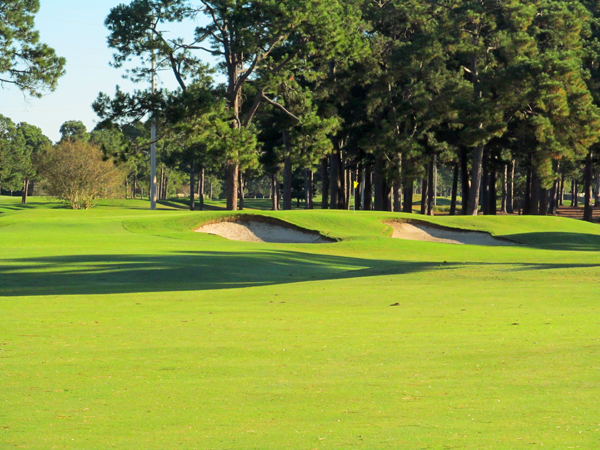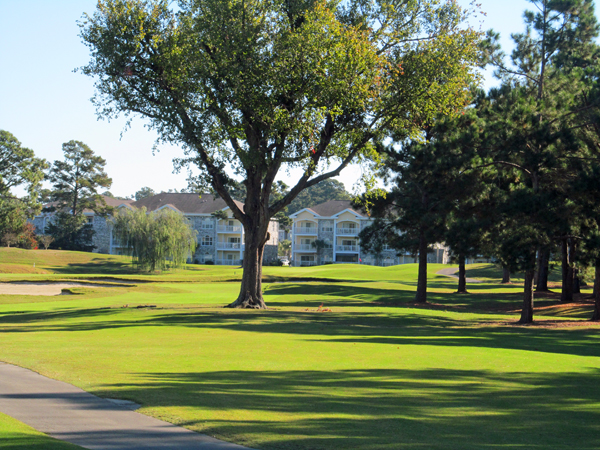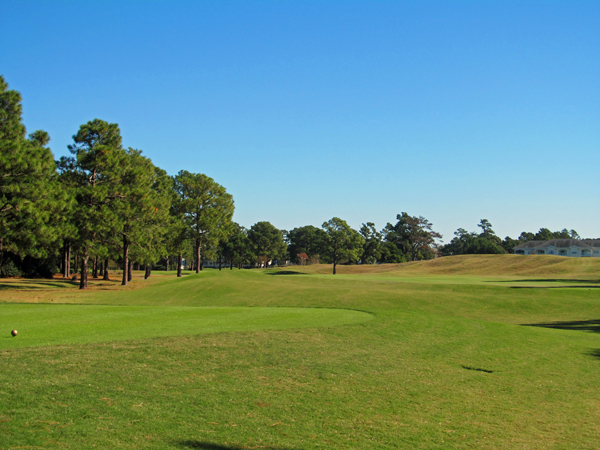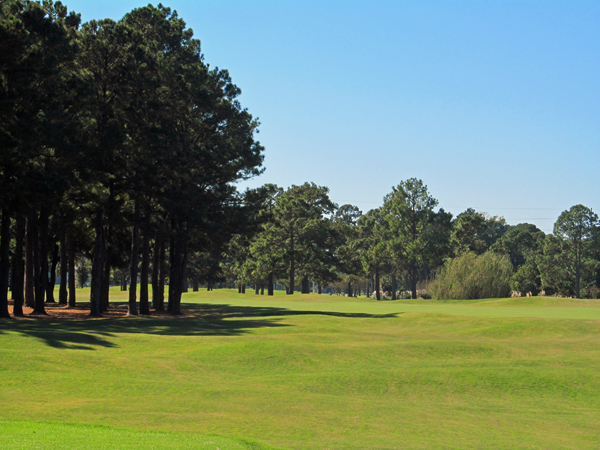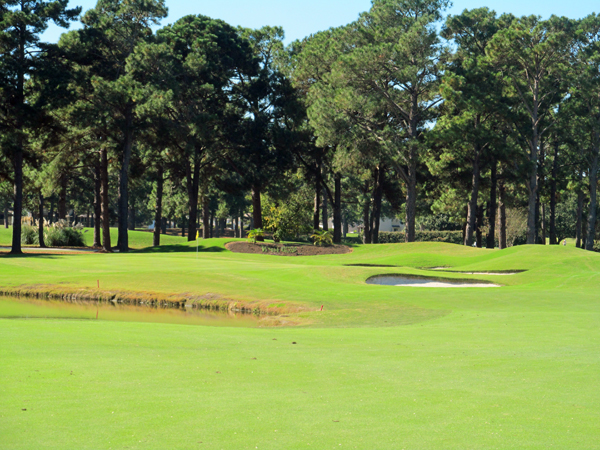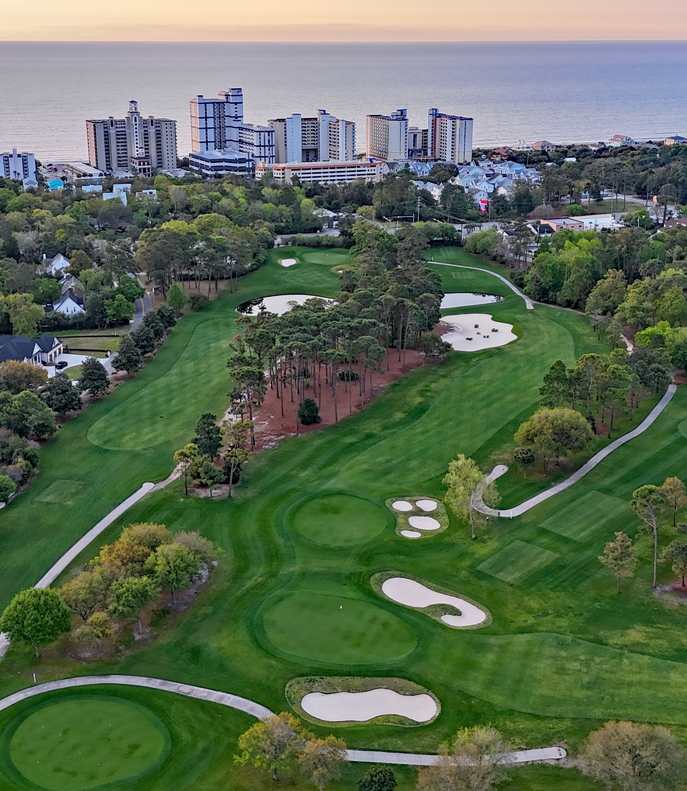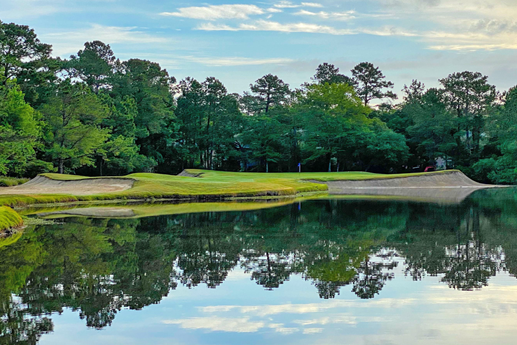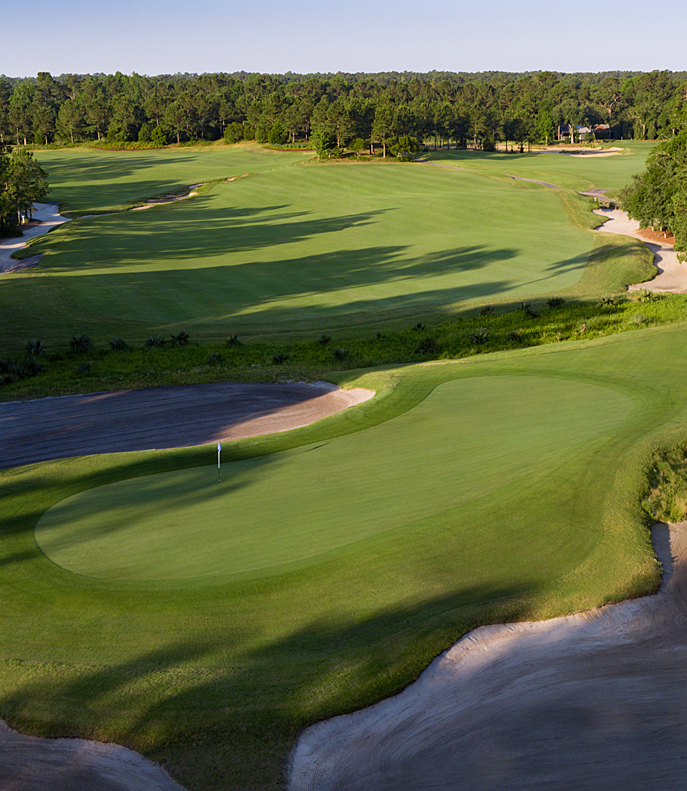Story & Photos by Ian Guerin
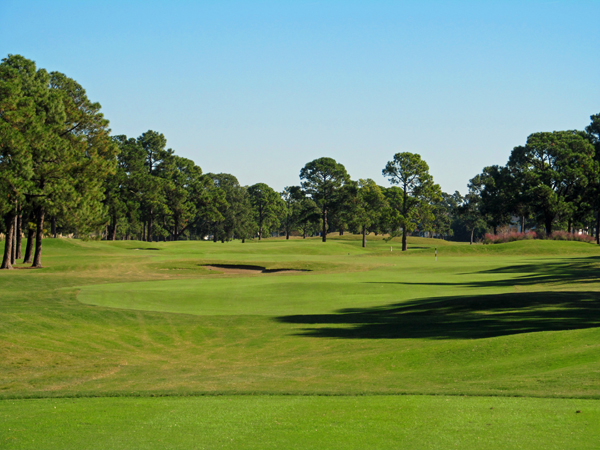 Myrtlewood Golf Club’s PineHills Course is approximately 400 yards shorter, regardless of tees, than its sister track, the Palmetto Course.
Myrtlewood Golf Club’s PineHills Course is approximately 400 yards shorter, regardless of tees, than its sister track, the Palmetto Course.
But ask regulars which one is tougher and there’s rarely any hesitation. PineHills can be, if not approached properly, the kick to the gut that Palmetto typically isn’t.
The reason for that is clear.
Humility.
Few golfers have the patience to truly analyze a hole from the tee box. They grab the driver as a default option. We’ll cut the stressful decision making out of the equation for you: Leave it in the bag.
More often than not, a driver off the tee here can be disastrous. Dog legs are present on seven of the 18 holes. Reachable sand traps affect shots from the tee on seven more. There’s also water directly in play on four more.
None of those figures take into account the par-72 course’s par 3s. Add in a handful of not-so-conveniently placed trees, and PineHills is a living, breathing advertisement for target golf in Myrtle Beach.
That’s the persona the course took on after Arthur Hills redesigned it in 1993. He took the natural terrain – relatively flat given you can smell the Atlantic Ocean – and beefed up the need for three and five woods, as well as long irons.
While PineHills doesn’t have a hole playing along the Intracoastal Waterway (like No. 18 at Palmetto), the entire No. 9 hole plays perpendicular to it, allowing for clear shots of the boats as you approach the green.
Oddly enough, that’s one of the few holes where using the big dog off the tee actually makes sense.
Granted, by the midway point of your round, you may already be driver-shy.
THIRD TIME NOT ALWAYS THE CHARM
 Hills didn’t give players much time to get ready for the hardest hole on his design.
Hills didn’t give players much time to get ready for the hardest hole on his design.
After a pair of par 4s to open, the top handicap awaits at No. 3. Off the tee on this 482-yard par 5, players will find water dead ahead on the other side of the fairway. It prevents most even mid-range hitters from attempting to manipulate a huge chunk of the distance right away.
Aside from the fear of needing a drop, going long here isn’t necessarily the right play anyway.
On the second shot, the outer bend of that water can still be in play. After that, it’s on to two green-side bunkers, one of which spans more than half the width of the green.
The combination can overwhelming if you’re not warmed up, and that much more rewarding if played correctly.
MORE PHOTOS
